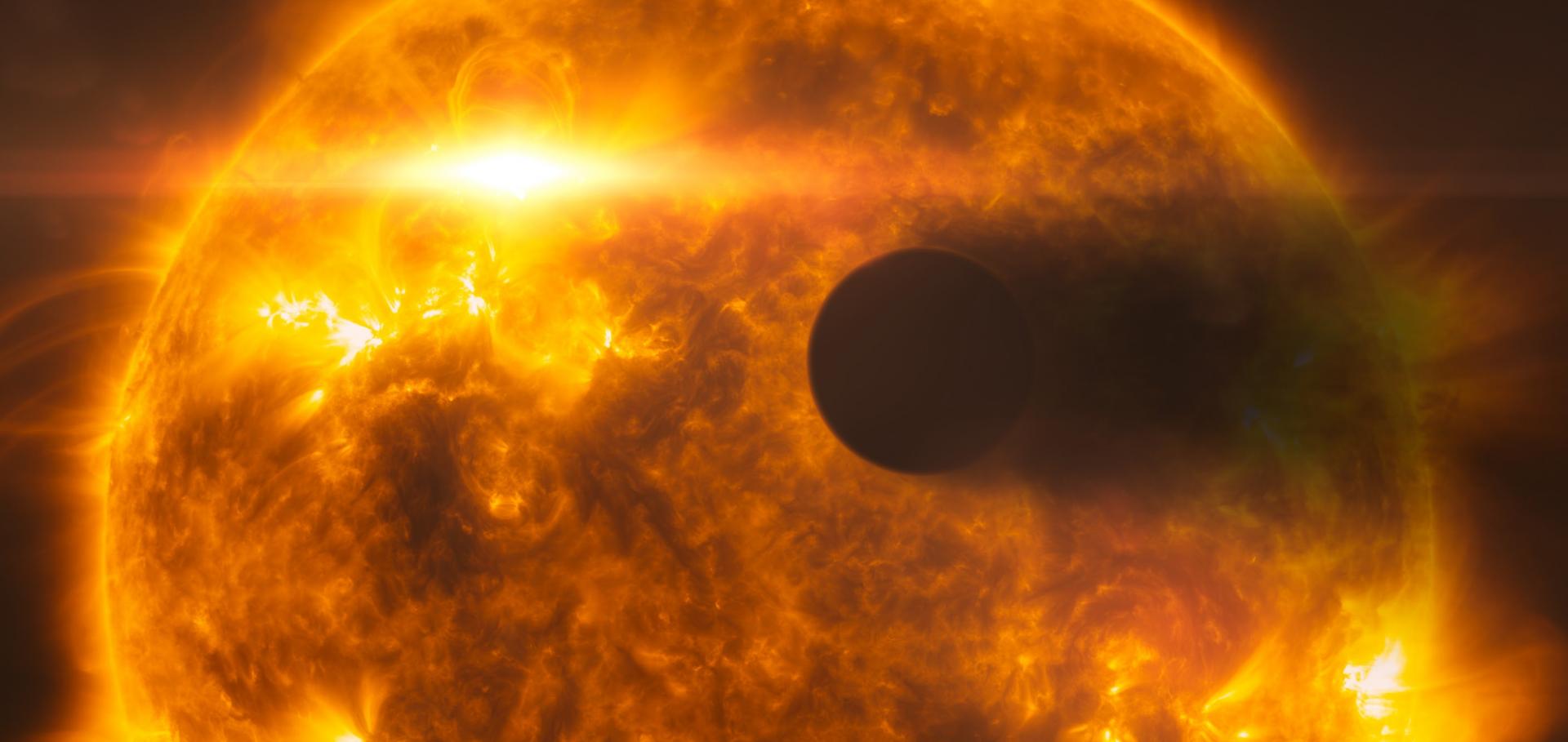Transiting exoplanets from the CoRoT space mission: II. CoRoT-Exo-2b: A transiting planet around an active G star
Astronomy and Astrophysics 482:3 (2008)
Abstract:
Context. The CoRoT mission, a pioneer in exoplanet searches from space, has completed its first 150 days of continuous observations of ∼12 000 stars in the galactic plane. An analysis of the raw data identifies the most promising candidates and triggers the ground-based follow-up.Aims. We report on the discovery of the transiting planet CoRoT-Exo-2b, with a period of 1.743 days, and characterize its main parameters.Methods. We filter the CoRoT raw light curve of cosmic impacts, orbital residuals, and low frequency signals from the star. The folded light curve of 78 transits is fitted to a model to obtain the main parameters. Radial velocity data obtained with the SOPHIE, CORALIE and HARPS spectrographs are combined to characterize the system. The 2.5 min binned phase-folded light curve is affected by the effect of sucessive occultations of stellar active regions by the planet, and the dispersion in the out of transit part reaches a level of 1.0910 in flux units.Results. We derive a radius for the planet of 1.465 0.029 and a mass of 3.31 0.16 , corresponding to a density of 1.31 0.04 g/cm. The large radius of CoRoT-Exo-2b cannot be explained by current models of evolution of irradiated planets.. © 2008 ESO.Transiting exoplanets from the CoRoT space mission: I. CoRoT-Exo-1b: A low-density short-period planet around a G0V star
Astronomy and Astrophysics 482:3 (2008)
Abstract:
Context. The pioneer space mission for photometric planet searches, CoRoT, steadily monitors about 12 000 stars in each of its fields of view. Transit candidates can be detected early in the processing of the data and before the end of a run of observation.Aims. We report the detection of the first planet discovered by CoRoT and characterizing it with the help of follow-up observations.Methods. Raw data were filtered from outliers and residuals at the orbital period of the satellite. The orbital parameters and the radius of the planet were estimated by best fitting the phase folded light curve with 34 successive transits. Doppler measurements with the SOPHIE spectrograph permitted us to secure the detection against binaries and to estimate the mass of the planet.Results. The accuracy of the data is very high with a dispersion in the 2.17 min binned phase-folded light curve that does not exceed ~3.10 in flux unit. The planet orbits a mildly metal-poor G0V star of magnitude in 1.5 days. The estimated mass and radius of the star are 0.950.15 and 1.110.05 . We find the planet has a radius of 1.490.08 , a mass of 1.030.12 , and a particularly low mean density of 0.380.05 gcm. . © 2008 ESO.Transiting exoplanets from the CoRoT space mission: III. The spectroscopic transit of CoRoT-Exo-2b with SOPHIE and HARPS
Astronomy and Astrophysics 482:3 (2008)
Abstract:
We report on the spectroscopic transit of the massive hot-Jupiter CoRoT-Exo-2b observed with the high-precision spectrographs SOPHIE and HARPS. By modeling the radial velocity anomaly occurring during the transit due to the Rossiter-McLaughlin (RM) effect, we determine the sky-projected angle between the stellar spin and the planetary orbital axis to be close to zero = 7.2 4.5 deg, and we secure the planetary nature of CoRoT-Exo-2b. We discuss the influence of the stellar activity on the RM modeling. Spectral analysis of the parent star from HARPS spectra are presented. © 2008 ESO.WASP-3b: a strongly irradiated transiting gas-giant planet
\mnras 385 (2008) 1576-1584-1576-1584
The Monitor project: the search for transits in the open cluster NGC 2362
(2008)


